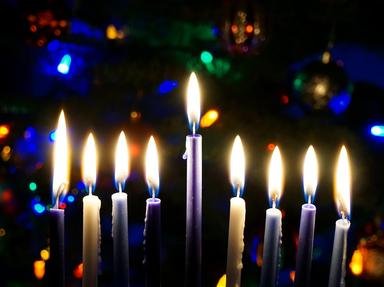
Ten Jewish Festivals Trivia Quiz
Judaism is a religion with many festivals and holy days, and all of these have certain symbols - foods, clothing, stories etc. - related to them. I give you three clues and you try and guess which festival they're associated with.
A matching quiz
by Kankurette.
Estimated time: 4 mins.